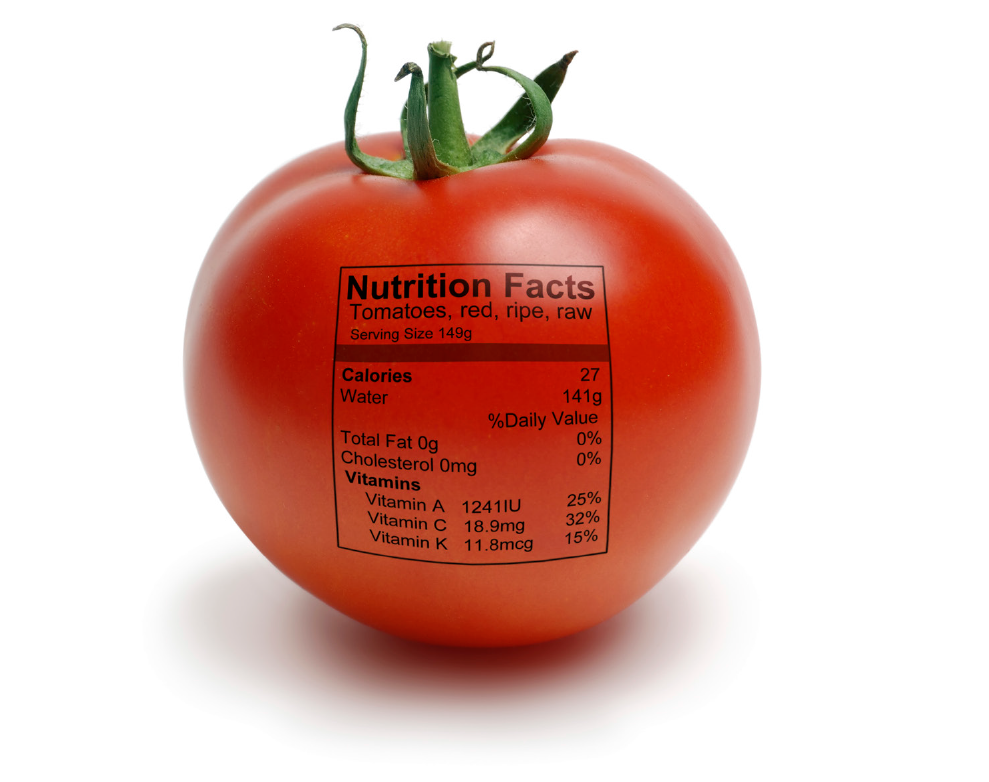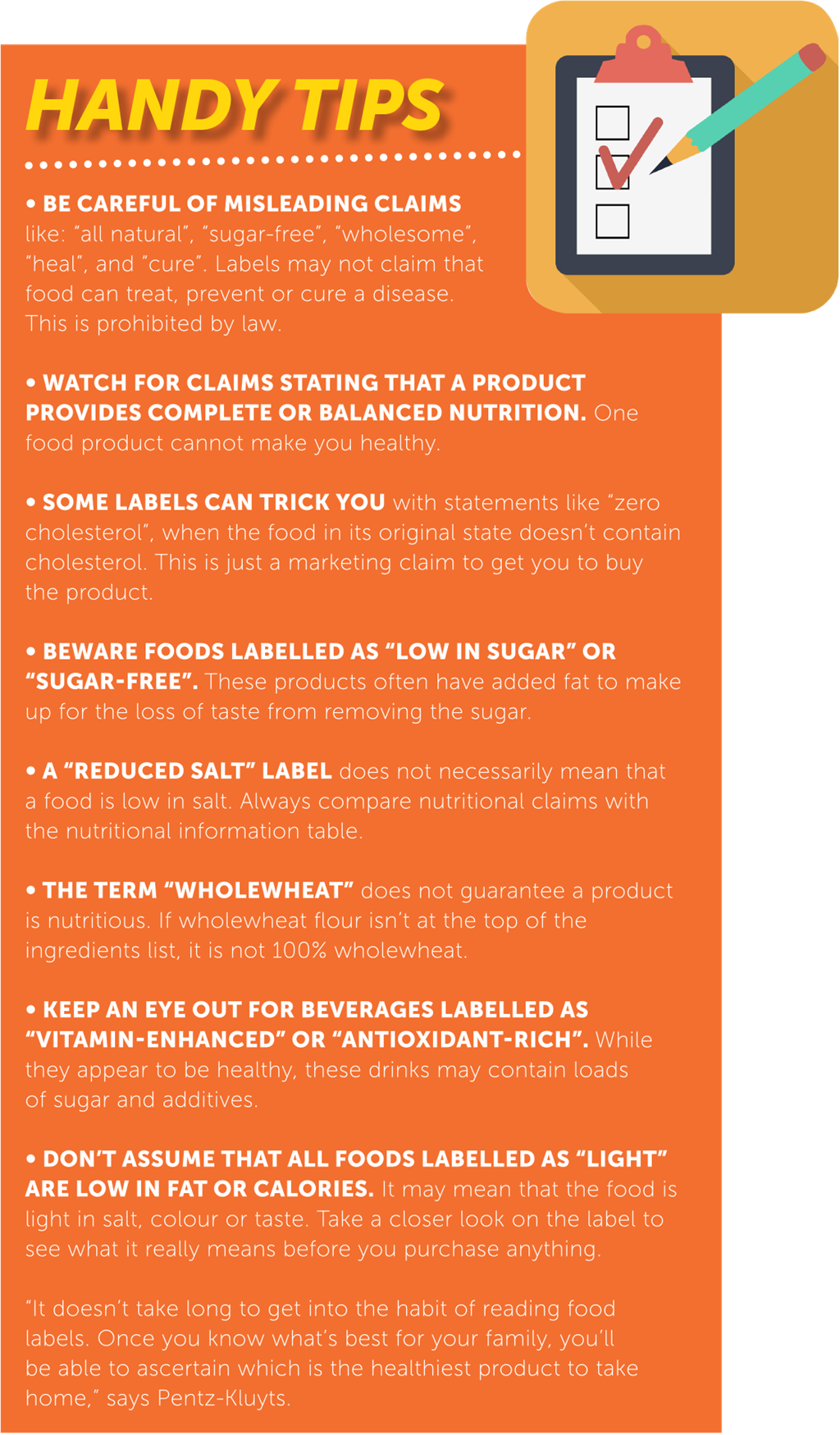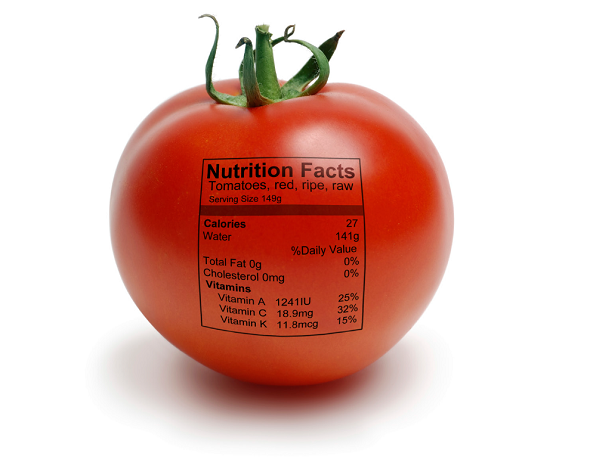
The ingredients list
Ingredients are listed in order of highest to lowest quantity. The lower down you find added sugar, salt, and fat, the better.
Look out for the different names for sugar, fat and salt.
- Sugar is often disguised as sucrose, glucose, maltose, dextrose, fructose, corn syrup, corn sweetener, honey, molasses, and
fruit juice concentrate. - Other terms for fat include hydrogenated oil, vegetable oil, palm oil, coconut oil, lard, cocoa butter, shortening, and whole
milk solids. - Salt can creep in as monosodium glutamate (MSG), baking powder, baking soda, brine, and soy sauce.
Sussing out the nutrients
This part of the food label lists the amount of nutrients found in a food product. This should be listed for each 100g of solid food and
by the recommended serving size. “By assessing these, you can guard your family against the potential risks of chronic conditions
like high blood pressure, diabetes, and cancer,” says Megan Pentz-Kluyts, a registered dietician from Cape Town.
Look for:
- Energy: units of energy are shown as calories or kilojoules. Look at how many calories are in one serving of the product,
and compare this with the nutrients offered. This will help you decide whether the food is worth the calories. - Protein: protein is listed as a single value in grams and can be given as a percentage of the recommended daily allowance.
Protein should make up 15% to 20% of your diet. - Carbohydrate: carbs are listed as glycaemic carbohydrate, which is the total carbohydrate available for metabolism. As sugar
is a form of carbohydrate, the amount of sugar making up this value should also be listed. If sugar makes up a large portion of the carbohydrate value, the food is probably very high in sugar and should be avoided. - Salt: salt is also known as sodium. Avoid foods with more than 600mg of sodium per 100g. Look for foods where the sodium
content is less than 120mg per 100g. Opt for low-sodium or unsalted versions. - Fat: look for foods with low levels of saturated fat, trans fat, and cholesterol. Saturated fats should be limited to less than two grams
per 100g of food, trans fats should be avoided altogether, and cholesterol should be less than 10mg per 100g of food. Look for foods
that have a higher unsaturated fat than saturated fat content, but unsaturated fats are still high in calories, so eat sparingly.
Opt for low-fat or fat-free options, but these products may be high in sugar and calories. - Fibre: foods that contain three grams or more of fibre per 100g are good sources of fibre.
- Vitamins and minerals: vitamins and minerals are listed in their relevant unit of measurement indicated in the percentage of
their recommended daily allowance. If the label doesn’t list a nutrient, it probably doesn’t contain a significant amount.






 Publications
Publications
 Partners
Partners















